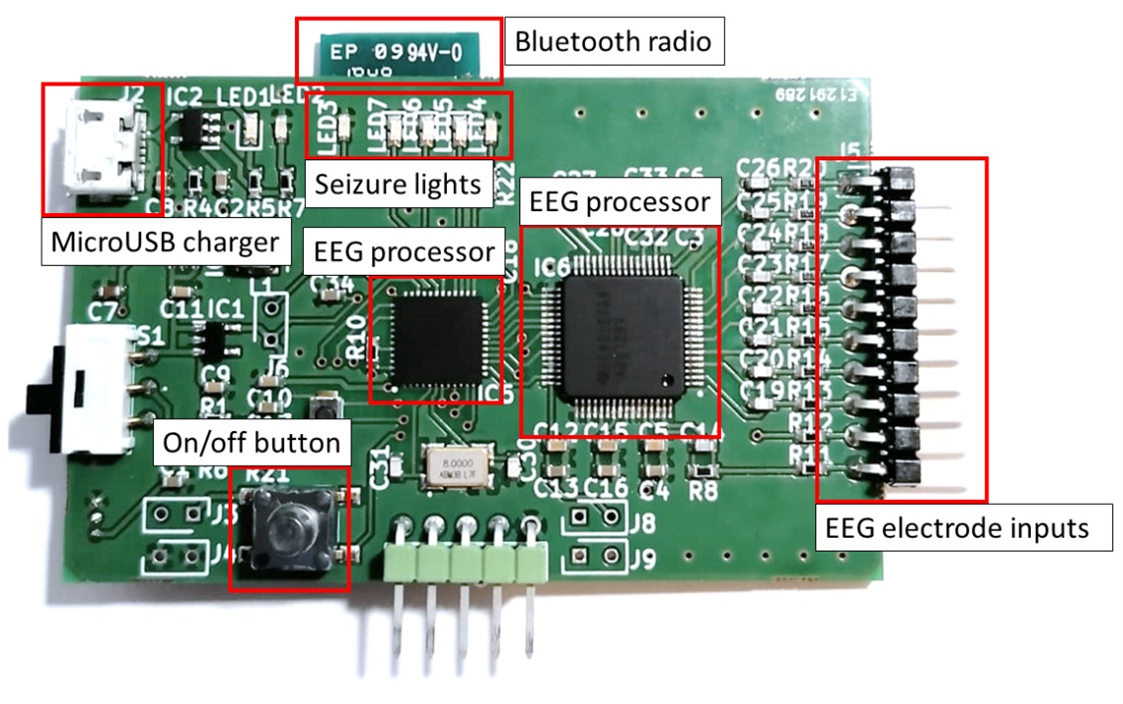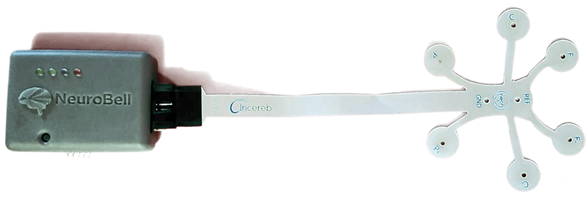Neonatal Neurology: Translational
Category: Abstract Submission
Neurology 1: Clinical Pediatric & Neonatal Neurology
544 - Neurobell: Portable EEG Monitoring with On-Board AI for Neonatal Seizure Detection
Friday, April 22, 2022
6:15 PM - 8:45 PM US MT
Poster Number: 544
Publication Number: 544.139
Publication Number: 544.139
Mark O'Sullivan, Infant Research Centre, University College Cork, Cork, Cork, Ireland; Alison O'Shea, INFANT/MTU, Cork, Cork, Ireland; Geraldine B. Boylan, University College Cork, Cork, Cork, Ireland

Mark O'Sullivan, PhD
Lead Investigator
Infant Research Centre, University College Cork
Cork, Cork, Ireland
Presenting Author(s)
Background: Neonatal seizures occur in 2 per 1,000 births [1]. Timely diagnosis of seizures using EEG is critical to guide therapeutic strategies. The portability of EEG monitors has improved in recent years. In parallel, advances have been made in artificial intelligence (AI) for neonatal seizure detection. In particular, Convolutional Neural Networks (CNNs) have facilitated the ability to take raw EEG signals and automatically learn discriminative features for the classification of neonatal seizures. To date, the advances in EEG hardware and AI-based diagnostics have been independent of each other.
Objective: This work presents the design of a unique portable EEG monitor with on-board AI for real-time detection of neonatal seizures. This work overcomes the barriers associated with the translation of novel algorithms into routine clinical usage by integrating them on a portable EEG monitor.
Design/Methods: A portable and wireless device was designed to meet the medical device standards for EEG recording. The device consists of an 8-channel EEG amplifier, a microcontroller to process the EEG, and Bluetooth radio to transmit the data for storage. The CNN for neonatal seizure detection presented in [2] was optimised and integrated onto the device to provide real-time decision support.
Results: The resulting device is 43mm x 26mm (smaller than a credit card) and can be connected to a standard neonatal EEG headcap. An optimised CNN model which takes 8-second EEG epochs at 50Hz sampling rate was trained and successfully implemented on the device. The CNN achieved 98.42% AUC, which corresponds to a good detection rate of 82.3% at a rate of 1 false detection per hour when tested on 24 hours of continuous EEG. The device can compute the seizure probability of 8-second epochs across 8-channels of EEG in 3.2 seconds. Conclusion(s): This work provides promise for the development of a portable device that can both record EEG data and provide decision support alerts on a single device for use in the neonatal ICU. Due to its computational efficiency, the device is capable of EEG recording, processing, and providing automated alerts in real-time for neonatal seizures at the cot-side.
References:
C. Gale, et al., “Neonatal brain injuries in England: population-based incidence derived from routinely recorded clinical data held in the National Neonatal Research Database,” Arch Dis Child Fetal Neonatal Ed., vol. 103, no. 4, pp. 301-306, 2017.
A. O'Shea, et al., “Neonatal seizure detection from raw multi-channel EEG using a fully convolutional architecture,” Neural Networks, vol. 123, pp. 12-25, 2020.
Device Circuit Board
Device enclosure connected to an off-the-shelf neonatal EEG headcap
Objective: This work presents the design of a unique portable EEG monitor with on-board AI for real-time detection of neonatal seizures. This work overcomes the barriers associated with the translation of novel algorithms into routine clinical usage by integrating them on a portable EEG monitor.
Design/Methods: A portable and wireless device was designed to meet the medical device standards for EEG recording. The device consists of an 8-channel EEG amplifier, a microcontroller to process the EEG, and Bluetooth radio to transmit the data for storage. The CNN for neonatal seizure detection presented in [2] was optimised and integrated onto the device to provide real-time decision support.
Results: The resulting device is 43mm x 26mm (smaller than a credit card) and can be connected to a standard neonatal EEG headcap. An optimised CNN model which takes 8-second EEG epochs at 50Hz sampling rate was trained and successfully implemented on the device. The CNN achieved 98.42% AUC, which corresponds to a good detection rate of 82.3% at a rate of 1 false detection per hour when tested on 24 hours of continuous EEG. The device can compute the seizure probability of 8-second epochs across 8-channels of EEG in 3.2 seconds. Conclusion(s): This work provides promise for the development of a portable device that can both record EEG data and provide decision support alerts on a single device for use in the neonatal ICU. Due to its computational efficiency, the device is capable of EEG recording, processing, and providing automated alerts in real-time for neonatal seizures at the cot-side.
References:
C. Gale, et al., “Neonatal brain injuries in England: population-based incidence derived from routinely recorded clinical data held in the National Neonatal Research Database,” Arch Dis Child Fetal Neonatal Ed., vol. 103, no. 4, pp. 301-306, 2017.
A. O'Shea, et al., “Neonatal seizure detection from raw multi-channel EEG using a fully convolutional architecture,” Neural Networks, vol. 123, pp. 12-25, 2020.
Device Circuit Board

Device enclosure connected to an off-the-shelf neonatal EEG headcap

